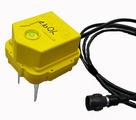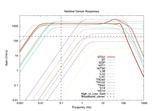EPIC Intermediate-Period Sensors:
Nanometrics Trillium40
Features:
The low-period corner is 40 seconds for the Nanometrics sensor. All are 3-component feedback sensors. The Trillium40 masses do not lock. One should still ship and handle them with care so as not to damage them.
Historically, the ESP's were among the first feedback sensors purchased for the EPIC program, along with STS-2's. For that reason, the ESP's have been 'categorized' as broadband sensors when broadband stations are scheduled for EPIC experiments. The ESP's are an ever-decreasing percentage of the EPIC broadband pool and we attempt to assign them as evenly as possible, roughly 10% of the sensors for a broadband experiment from 2006 onward, and that number should decrease further after 2009.




